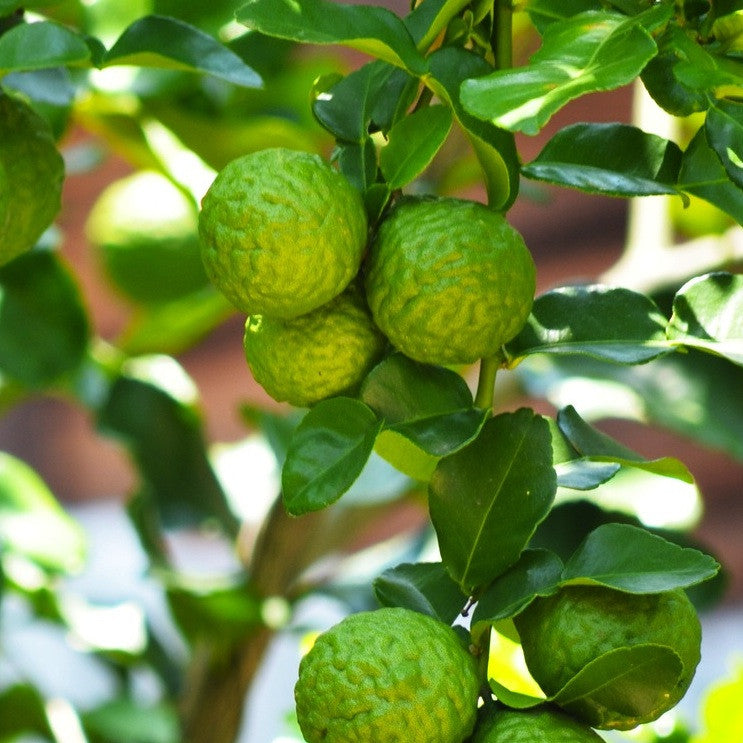TIMELESS Essential Oils
Bergamot, Organic
Couldn't load pickup availability
Therapeutic Organic Bergamot essential oil
Product Details
Botanical name
Citrus bergamia
Aroma
Sweet-fruity top note with herbaceous, somewhat balsamic body
Note
Top
Odor Intensity
5
Key constituents
Limonene, Linalyl acetate, Linalool, Beta-pinene
Extraction method / Source
Peel of the fruit is cold pressed. Cold pressing preserves the aromatic and therapeutic properties of the oil. After extraction, Bergaptene is removed.
Plant description
Botanical family: Rutaceae (citrus)
Bergamot trees originally grew exclusively in a narrow coastal strip in Calabria, Italy, but are now cultivated in Corsica, Morocco, Guinea and the Ivory Coast. Bergamot is a deciduous tree which can reach up nearly 40 feet. The tree has dark green, glossy leaves and produces small, bitter citrus fruits which become yellow when ripe. The fruit is exceedingly sour, and cannot be eaten, so the trees are primarily cultivated for essential oil.
Regions of Production
Italy
Growing Practices
Fruits are harvested from trees grown without chemical fertilizers or pesticides.
History / Fun Facts
It is believed that Christopher Columbus brought bergamot trees to Bergamo, in northern Italy, from the Canary Islands. Bergamot oil gives Earl Grey Tea its distinctive scent and flavor.
Properties
Analgesic, antidepressant, antiseptic, antiviral, carminative, cicatrisant, deodorant, digestive, febrifuge, sedative, stomachic, tonic, vermifuge, vulnerary (Battaglia, 2003)
Please refer to the Glossary for terms which may be new to you.
Uses / Benefits
A great choice for helping manage oily skin and related conditions. Bergaptene free Bergamot is less likely to irritate sensitive skin.
Fragrant influences
Calming, uplifting, promotes concentration and harmony, useful for managing grief. Promotes restful sleep.
Blends well with
Bergamot, Black Pepper, Clary Sage, Cypress, Frankincense, Geranium, Helichrysum, Jasmine, Lavender, Mandarin, Nutmeg, Orange, Rosemary, Sandalwood, Vetiver
Safety
Non-toxic, non-sensitizing. Bergaptene free Bergamot is less likely to cause skin irritation, and is not reported to be phototoxic.
Notice
This information is for educational purposes only. It has not been evaluated by the US Food and Drug Administration. It is not intended to diagnose, treat, cure or prevent any condition or disease, and should not take the place of evaluation by a qualified health professional. Although we strive to provide information which is accurate and up to date, we cannot guarantee the accuracy or completeness of this information.
Precautions
Pure essential oils are highly concentrated plant extracts. Do not use them undiluted, or in the eyes or mucus membranes. If applying an essential oil to the skin, always dilute it with a proper carrier oil and test on a small patch of skin before applying to a large area. Do not take them internally except under the direction of a qualified professional trained in Aromatherapy. Always familiarize yourself with the safety, contraindications and proper preparation of each essential oil before use. Note that when using essential oils for children and the elderly, very low concentrations should be used. Keep all essential oils away from children and pets.
References
Battaglia, Salvatore, The Complete Guide to Aromatherapy, Second Edition, 2003.
Wildwood, Chrissie, The Encyclopedia of Aromatherapy, 1996. Healing Arts Press, Rochester, VT.
Worwood, Valerie Ann, The Complete Book of Essential Oils & Aromatherapy, 1991. New World Library, Novato, California
TIMELESS Essential Oils guarantees the purity and quality of all our therapeutic oils. The current Certificate of Analysis is available upon request. All essential oils are best stored in an airtight container away from heat and light.


